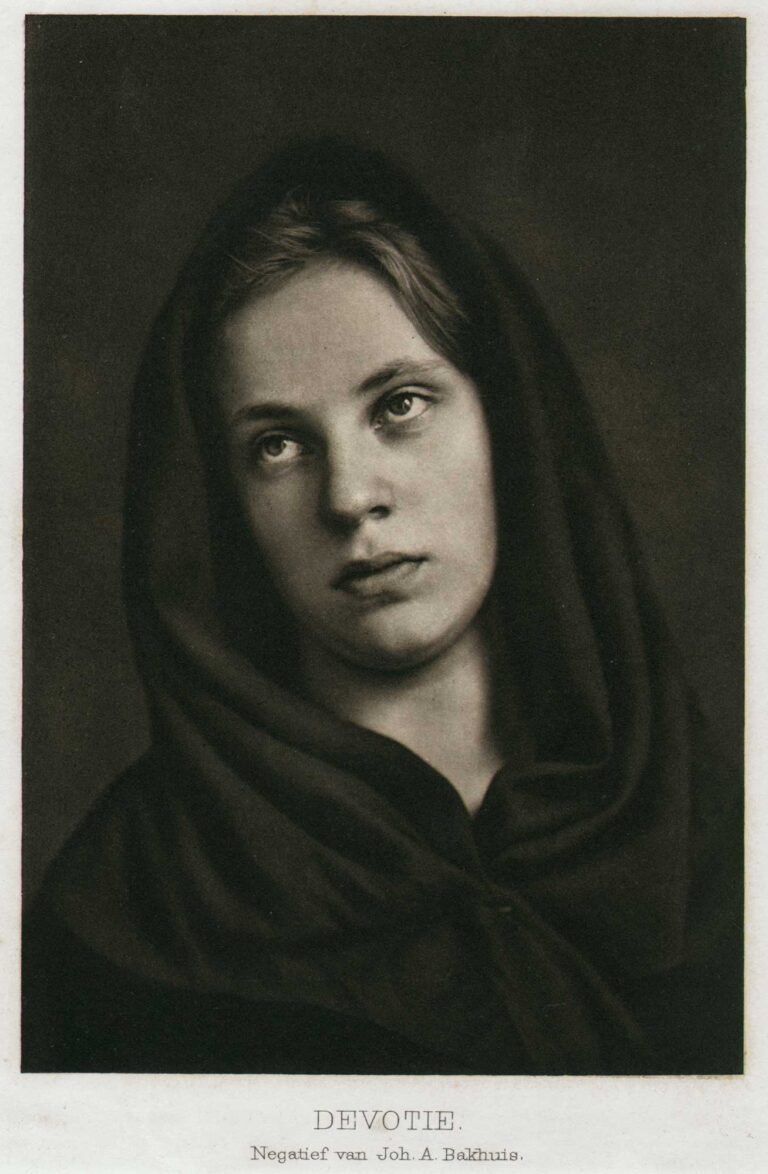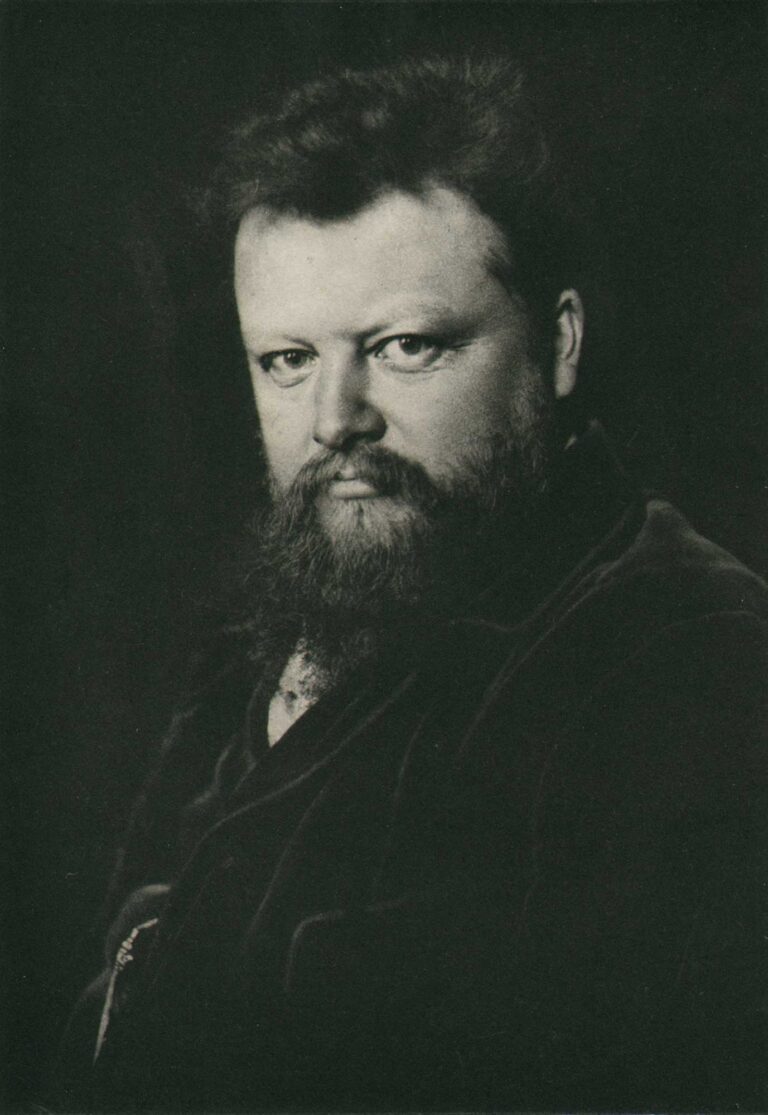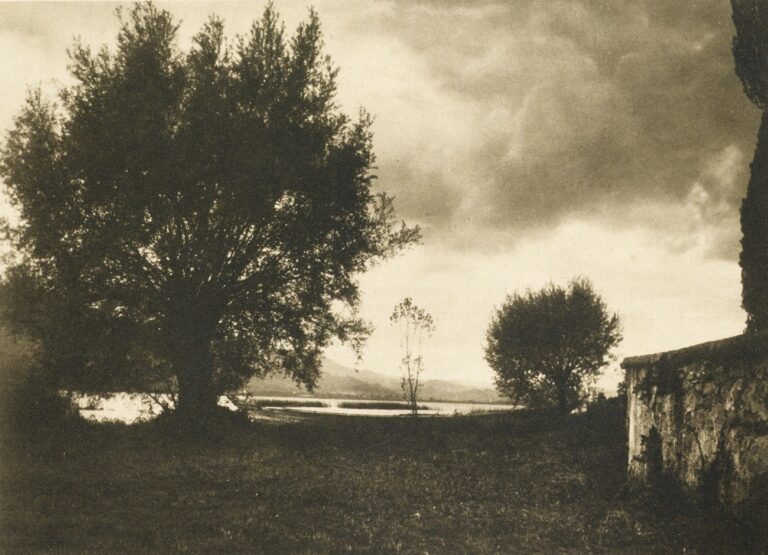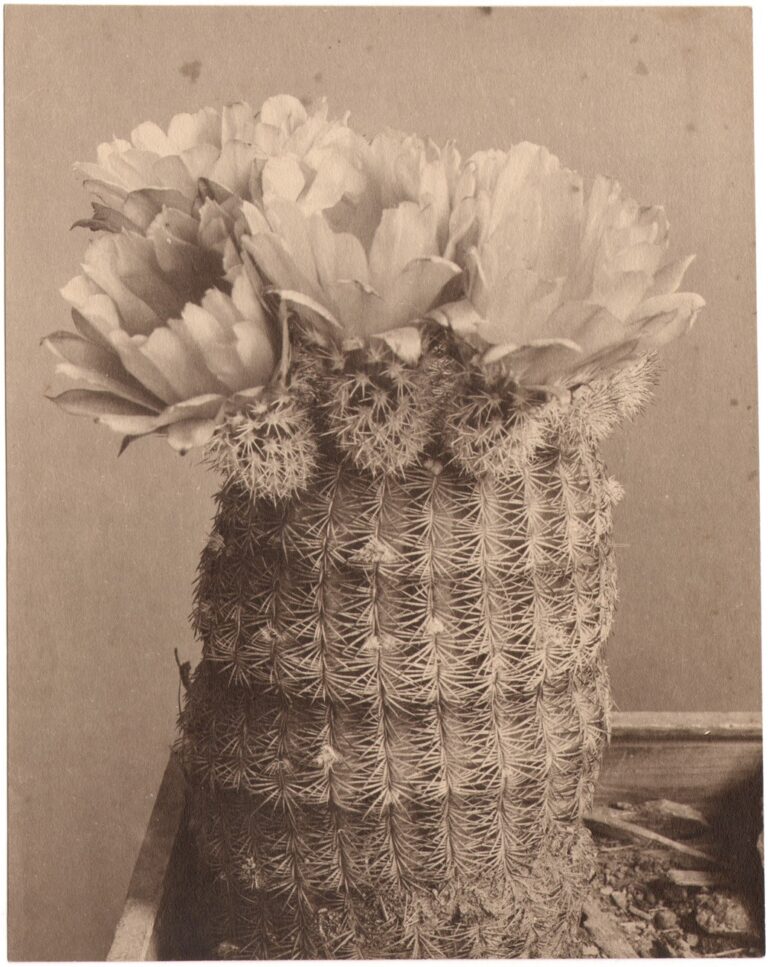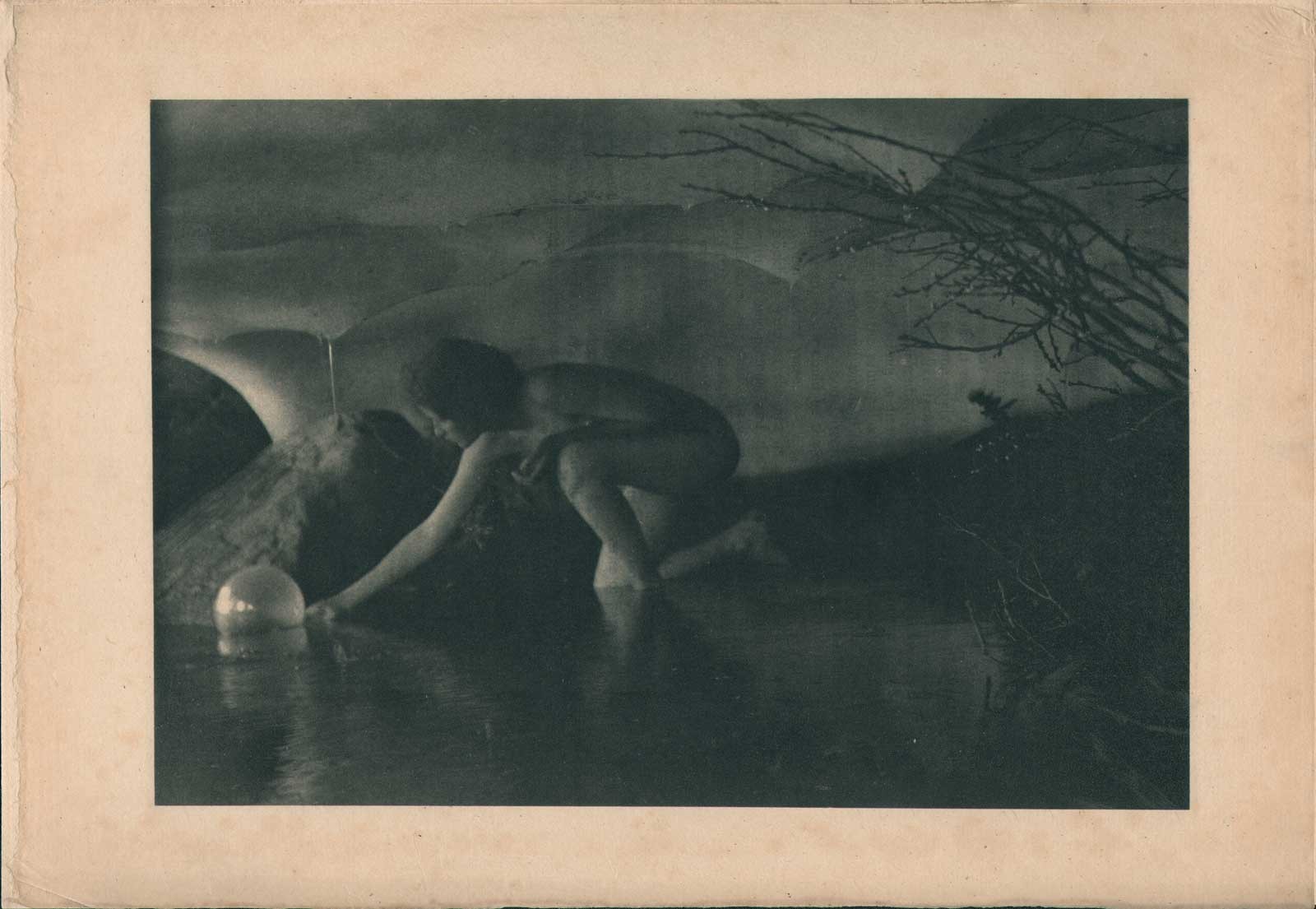
The Bubble
Institutionally dated to 1907 but perhaps earlier, (1905 chlorobromide print in Princeton University Art Museum) The Bubble by Anne Brigman is one of the photographer’s best known early nude Symbolist works taken in California’s Sierra Nevada mountains.
With the focus being a young female model reaching out at left either launching or retrieving a floating “bubble”, the location itself reinforces the ephemeral and changing qualities of nature. In this case, like a soap bubble that can disappear at a moment’s notice, the melting snow overhead (the model kneels in a pool of water under an overhang) is actually doing just that: with a small stream of water falling just to the left of the model’s head onto a rock behind the bubble.
Melting snow and bursting bubbles aside, others looking for meaning in the use of glass globes or orbs often featured in photographs by early Pictorialist photographers such as Fred Holland Day and Clarence White have found evidence of the object doing a stand-in for the earth itself, or as a symbol of prophesy (divination) or of religious ideals.
“Gazing” globes, made from blown glass, have been around for centuries, and are still seen today-often mounted atop pedestals-where they are used in decorative landscape settings such as gardens. Hand-blown, clear glass fishing floats, the type most likely seen in this photograph by Brigman, were first manufactured in Norway around 1840.
Commentary on two photographs by Brigman, including The Bubble, from the March 8, 1910 issue of the British journal The Amateur Photographer & Photographic News:
Note on Two Pictures by Mrs. Annie W. Brigman in this Issue.
The two pictures by Mrs. Annie W. Brigman, which are reproduced in this issue of THE AMATEUR PHOTOGRAPHER AND PHOTOGRAPIC NEWS, strike a note which suggests new possibilities in expression, whilst it sounds an advance to those who are taking a despondent view of modern pictorial photography. There is an idealism in this lady’s work, an idealism which suggests something of the spirit of the ancient Greeks, whilst it is both original and modern in its feeling.
Thus, to Mrs. Brigman, the pine tree is not a mechanical evolution of nature, but a living thing with a separate life and an individuality which marks it off from all other trees. The pine tree is struck by lightning and dies; its life and individuality die with it. But since we can form no mental conception of the immaterial individuality of a pine tree —that is to say, no clearer mental conception than we can form of a human soul or an angelic spirit — the soul of the blasted pine tree is expressed in the form of a female figure: even Fra Angelico drew his angels rather like women.
This is the meaning of “The Soul of the Blasted Pine,” and it is Hellenism pure and simple. in exactly the same way, “The Bubble” (reproduced as a special mounted supplement to this issue of THE A. P. AND P. N.) carries out the Greek idea that each stream has its attendant spirit; this particular spirit is neglecting its duties in order to play with a particularly large and fascinating bubble.
In neither of these pictures has Mrs. Brigman entirely succeeded in eliminating the human origin of her “spirits,” they are still material; but she has certainly escaped all suggestion of the undraped model. Although she may not have quite reached the Greek ideal, she has avoided the fleshy suggestions of a Correggio or a Rubens—and this by camera work pure and simple. Possibly she may have been handicapped by the solidity of the low tones she has adopted, and it would be very interesting to see this worker attempt to work out a theme similar to “The Bubble,” in a high key: the result might be more ethereal.
There is no studio work about Mrs. Brigman‘s methods of photography. She lives in the heart of California and works in the open air. She takes small original negatives and enlarges them in bromide. These details are interesting, because they show that these really remarkable pictures. like most of the really progressive modern work, are the result of an individual mind expressing itself in pure photography, without manipulation of negative or print.
Like all half tones, the pictures suffer somewhat in the reproduction; but as the merit of both “ The Soul of the Blasted Pine” and “The Bubble” depends more on the selection and interpretation of subject than on the technical rendering. these two pictures suffer less than most. A. J. A. (p. 236)
One other intriguing idea, especially in relation to photographic achievement, points to the role of glass orbs being symbolic of mankind’s culminating progress in scientific exploration via optical glass manufacturing, which reached new heights in 1608. This was when polished and cut glass lenses were first used in refracting telescopes in the Netherlands that year, and even earlier, in 1595, when microscopes from Middelburg in the Dutch Republic were first recorded. (Wikipedia)
